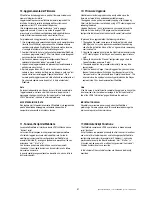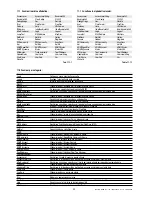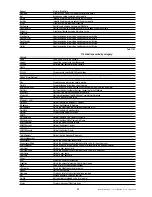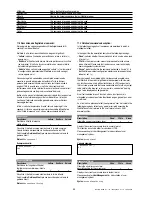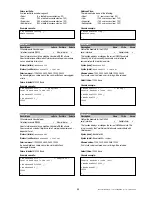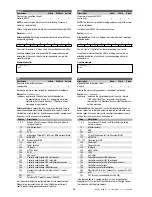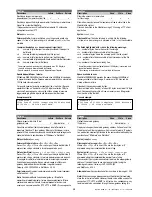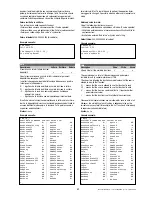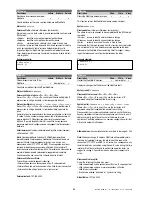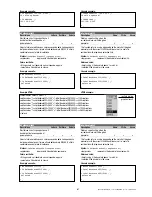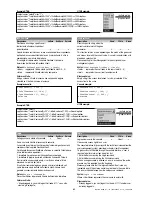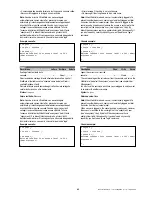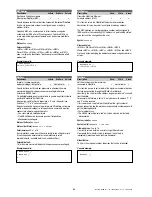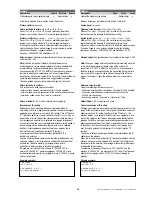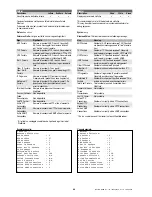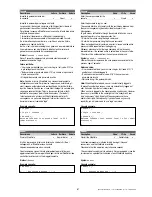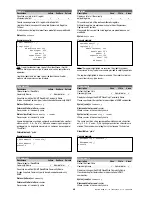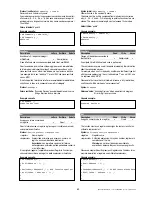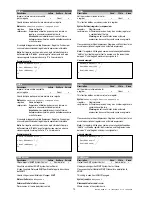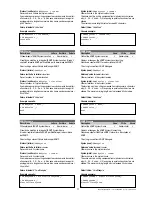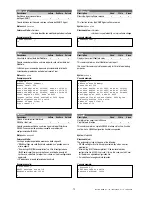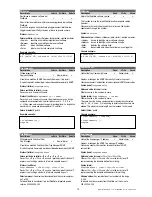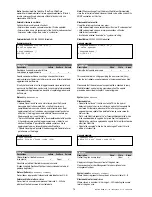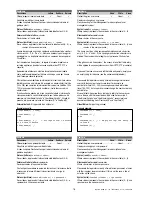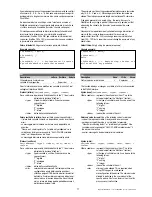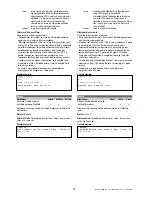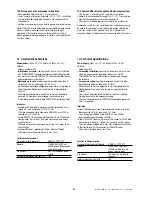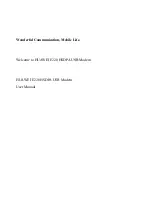
NetMask
Descrizione
Lettura
Scrittura
Salvato
Ottiene/imposta il mask pattern di rete
√
Administrator
×
Visualizza o modifica il mask pattern di rete (“netmask”).
Sintassi (lettura):
NetMask
Valore restituito in lettura:
<IPx>.<IPy>.<IPz>.<IPw>
Dove <IPx>, <IPy>, <IPz> e <IPw> sono i quattro byte del mask
espressi con la stringa standard IP, in formato separato da punti.
Sintassi (scrittura):
NetMask = <IPx>.<IPy>.<IPz>.<IPw>
Dove <IPx>, <IPy>, <IPz> e <IPw> sono i quattro byte del mask
espressi con la stringa standard IP, in formato separato da punti.
Si consiglia di contattare l’amministratore di sistema per ottenere il
netmask corretto. Se non avete bisogno di usare un gateway, potete
disabilitarlo utilizzando i seguenti comandi:
Gateway = 255.255.255.255, e NetMask = 0.0.0.0
Valori ammessi:
Qualsiasi combinazione di quattro numeri compresi
nell’intervallo 0…255
Nota:
Quando si modifica il netmask, il WebGate memorizza
immediatamente il valore appena selezionato. Tuttavia continuerà ad
essere utilizzato il valore precedente finché ci sarà ancora una
connessione attiva (FTP, HTTP o SNMP). Di conseguenza, qualsiasi
tentativo di stabilire una connessione con la nuova impostazione,
durante questo intervallo di tempo, fallirà. Per evitare che ciò accada ed
espletare l’operazione più velocemente, suggeriamo di cambiare
l’indirizzo quando non sono attive richieste da parte di altri utenti.
Valore restituito in scrittura:
Può verificarsi una delle seguenti situazioni:
• Valore valido e nessuna connessione attiva: IP value updated!
• Valore valido e una o più connessioni attive: Valid for next connection!
• Valore non valido: stringa “bad value” o “syntax error”.
Valore di default:
0.0.0.0 (non è utilizzato nessun gateway)
Breve nota su IP routing
Sebbene una discussione approfondita sulle problematiche di
networking non sia lo scopo di questo manuale, vorremmo comunque
aggiungere una breve nota su netmask e IP routing. Oltre all’“Indirizzo
IP”, il netmask definisce anche la sottorete (“subnet”) in cui si trova un
dispositivo e istruisce il dispositivo stesso quando si vuole indirizzare
un messaggio ad un gateway. La sottorete è un gruppo di dispositivi
che comunicano e che sono in collegamento diretto tra loro. Quando si
deve accedere ad una destinazione remota, esterna alla sottorete,
dall’host, il messaggio deve passare attraverso un gateway che lo
indirizzerà verso la corretta destinazione (“IP routing”).
La sottorete è definita dalla combinazione dell’Indirizzo IP e
dell’indirizzo netmask.
Quando il valore ottenuto, combinando l’indirizzo di destinazione con
l’indirizzo netmask, è lo stesso ottenuto combinando l’indirizzo IP del
mittente con l’indirizzo netmask, il messaggio viene inviato
direttamente, altrimenti viene re-indirizzato al gateway.
Ad esempio, se l’Indirizzo IP del mittente è “192.168.0.250” e il
netmask è “255.255.0.0”, ogni messaggio per “192.168.X.X” viene
inviato direttamente, mentre un messaggio inviato a “192.20.0.0” passa
attraverso il gateway.
Esempio consolle:
> NetMask
↵
192.168.0.0
> NetMask=0.0.0.0
↵
IP value updated!
> _
NetMask
Description
Read
Write
Saved
Get/set the network mask pattern
√
Administrator
×
Displays or changes the network mask pattern (“netmask”).
Syntax (read):
NetMask
Returned value for read:
<IPx>.<IPy>.<IPz>.<IPw>
Where <IPx>, <IPy>, <IPz> and <IPw> are the four bytes of mask
expressed using the standard IP dotted format string.
Syntax (write):
NetMask = <IPx>.<IPy>.<IPz>.<IPw>
Where <IPx>, <IPy>, <IPz> and <IPw> are the four bytes of mask
expressed using the standard IP dotted decimal format string.
Please contact your system administrator to obtain the proper netmask.
If you don’t need to use a gateway, disable it using the following
commands: Gateway = 255.255.255.255, and NetMask = 0.0.0.0
Allowed values:
Any combination of four numbers in the range 0…255
Note:
When you change netmask, WebGate will immediately store the
value just selected. However, the old value will be used until a
connection (FTP, HTTP or SNMP) is still active. As a consequence, a
tentative to obtain a connection using the new setting during this time
interval will fail. To avoid this and to perform the operation faster, we
suggest to change it, if possible, when no other user’s requests are
active.
Returned value for write:
One of the following situations may occur:
• Valid value entered and no connections still active: IP value updated!
• Valid value entered and one or more connections still active:
Valid for next connection!
• Invalid value entered: “bad value” or “syntax error” string.
Default Value:
0.0.0.0 (no gateway is used)
A concise note about IP routing
Although a comprensive discussion of networking issues are out of the
scope of this document, we want to briefly add an additional comment
about netmask and IP routing. Together with the “IP address”, the
netmask defines a sub-network (“subnet”) where an appliance is, and
instruct the appliance itself when a message must be redirected to a
gateway. A subnet is a group of communicating appliances that are in
direct connection between them. When a remote destination, external
to the subnet, must be accessed from the host, the message must
pass through a gateway that will redirect it to the right location (“IP
routing”).
The subnet is defined performing a bitwise and-mask between the IP
address and the netmask.
When the value obtained “and-masking” a destination address with the
netmask is the same value obtained “and-masking” the IP address of
the sender with the netmask, the message is sent directly, otherwise it
is redirected to the Gateway.
For example, if the sender IP address is “192.168.0.250” and the
netmask is “255.255.0.0”, any message for “192.168.X.X” will be send
directly, but a message sent to “192.20.0.0” will pass through to
gateway.
Console example:
> NetMask
↵
192.168.0.0
> NetMask=0.0.0.0
↵
IP value updated!
> _
65
Manuale WebGate - cod. +030220230 rel. 1.0 - 16.09.2003

